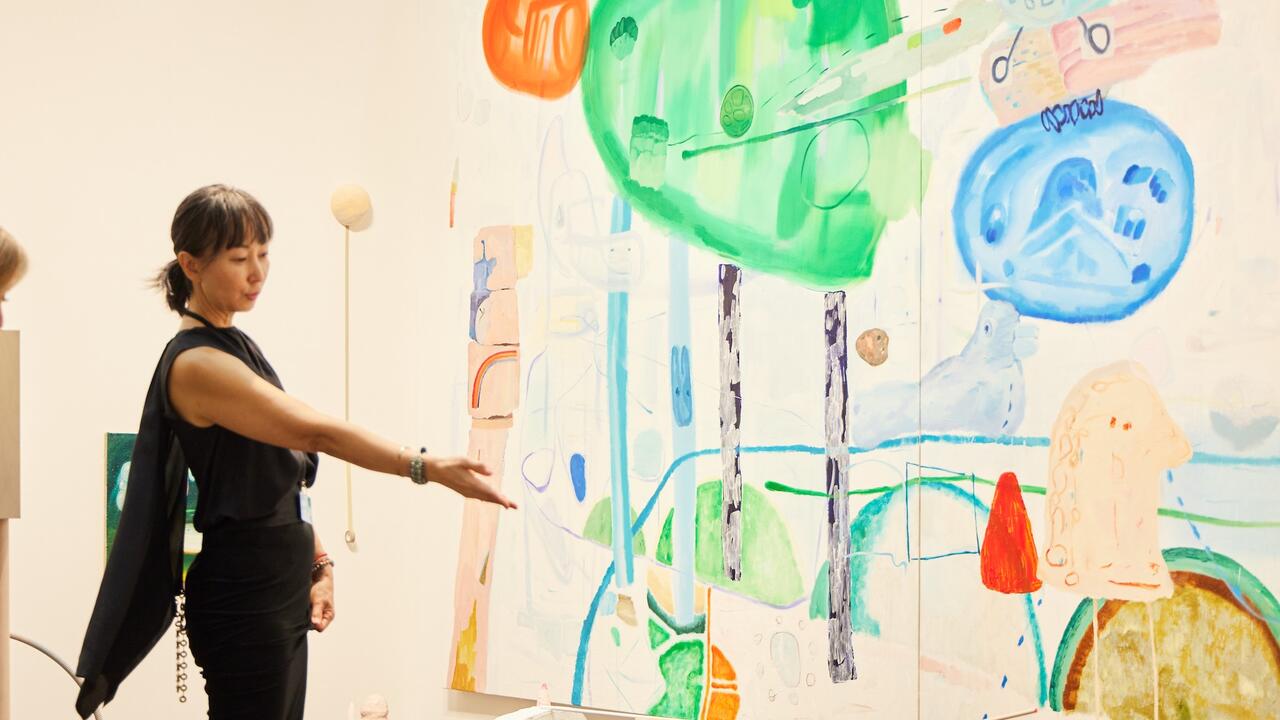God Only Knows
Religion and the art world
Religion and the art world

Art and religion: the two touch constantly, but little is said about it. Last August I went to Germany to see documenta 12 and Sculpture Projects Muenster – tellingly Bruce Nauman’s Square Depression (1977/2007) was the stand-out, or stand-in, piece – and attended the inauguration of the stained-glass windows created by Gerhard Richter for Cologne Cathedral to replace those shattered by Allied bombing over 60 years ago. It was a major event, and a perplexing one for those who thought no artist since Matisse would risk his/her Modernist status by accepting commissions from the Church, much less do so as an act of faith. Well, Richter had, and the Church was there in force for a Mass in honour of his work – glorious Cage-like random colour squares in a Gothic Hildegard von Bingen structure. There were choirs, incense, a sermon and three high-ranking church officials presiding over a huge congregation in this devoutly Catholic, but also carnival-mad, Rhineland city – hello up there, Mikhail Bakhtin. Unsurprisingly, the art world composed a fraction of the crowd. Besides local museum people were just a handful of out-of-town friends, including Benjamin Buchloh and me: two greying ’68ers, one a cleric of the old-time religion of the Marxist left, the other a long-time dissenter from the same contradiction-ridden creed.
Jump-cut to October in Venice, where I was asked to greet priests and nuns on an official visit to the Biennale. It was a daunting prospect, given that my liberal Protestant upbringing ended long before my serious engagement with Marx waxed and waned. But after being reassured that my categorical secularism was no problem and, after being told that the group leader (a rising figure in the hierarchy) had seen the show six times, I accepted to make a welcoming statement, which the Biennale management plainly hoped – perhaps prayed – would be formal and content-free. That is not my way. Moreover, I could tell the minute I stepped in front of the microphone that that was not what those assembled really wanted either. So I addressed the parts of the exhibition that would be of greatest interest to them, and of greatest difficulty.
The things I chose to speak about did not include such obviously hot-button items as Jason Rhoades’ phantasmagoria of names for female genitalia – people who find the show dour seem to have missed this neon orgy, although the Minister of Culture loved it and narrowly escaped having his picture taken under a vivid example when the Spanish slang was translated for him. But in addition to pieces dealing with conflict in the Middle East and the fate of migrants in Australia, Latin America and Africa – the un-comic comic book by Eyoum Ngangué and Faustin Titi tells the story of a young African’s thwarted attempt to reach Europe by boat, although men from Mali and Senegal who have ‘succeeded’ find themselves on the streets of La Serenissima selling Chinese knock-offs of Gucci and Fendi – my selection did include two bodies of work that would be highly provocative for anyone of dogmatic beliefs.
The first was a series of five austere realist paintings of the senior representatives of the principal sects that claim Jerusalem as sacred ground: a Catholic cardinal, an Eastern Orthodox archbishop, an Ashkenazi rabbi, a Sephardic rabbi and a Sunni imam. The source for these portraits by the Iranian-born Y.Z. Kami was a news service photograph of the same men gathered in common cause – to ban a march of gays and lesbians in ‘their’ holy city. In short, I explained, it was an ecumenical meeting called to cast out those that all could agree were absolutely ‘Other’.
The second was a suite of collages by the 84-year-old but astonishingly vigorous, protean and irreverent Argentine avant-gardist León Ferrari. Some consisted of pages from the Vatican daily Osservatore Romano featuring articles on modern life and morality – homosexuality again – overlaid with old images of the Apocalypse, the Last Judgement and the Expulsion from Eden as well as engravings of the Inquisition. Other pages from the searing project ‘Nunca más’ (Never Again) show precisely how history repeats itself as nightmare. In one, Hitler shakes hands with a papal nuncio while hovering above the Argentine dictator Jorge Videla, who shakes hands with a contemporary man of the cloth. In another Videla’s junta stands beneath the Fall of the Angels. Ferrari’s father, I told the delegation, had worked in Venice and painted religious subjects in Buenos Aires churches; his son, I said, had been ‘disappeared’ by Videla. I then noted that the very day of our encounter, Argentine courts had convicted a military chaplain for the murder and torture of political prisoners – a long overdue first! What individuals in the audience thought or felt I cannot say. I do know I was not preaching to the art world choir.















